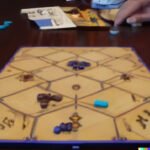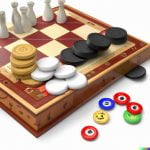Are you looking to introduce your children to the joy of classic children’s board games? These timeless and beloved games have been a staple in family game nights for generations. From ancient roots to modern favorites, classic children’s board games have stood the test of time and continue to provide endless hours of entertainment and learning for kids of all ages.
Classic children’s board games encompass a wide range of options, from strategy-based games like Chess and Checkers to luck-based games like Snakes and Ladders. The appeal of these games lies in their ability to engage and entertain children while also providing valuable educational benefits.
In this article, we will explore the history of classic children’s board games, delve into the educational benefits they offer, highlight the top 10 must-have board games for every family, discuss how these games promote family bonding and quality time, and examine their evolution from traditional to modern variations.
We will also look at the social and emotional developmental benefits that arise from playing these timeless games and provide tips for introducing them to a new generation of kids.
Join us as we celebrate the enduring legacy of classic children’s board games.
History of Classic Children’s Board Games
Classic children’s board games have a rich and interesting history that dates back to ancient civilizations. These games were not only a source of entertainment but also served as tools for teaching important life skills and strategies. From the Egyptian game of Senet to the Indian game of Pachisi, classic board games have been enjoyed by children and adults alike for centuries.
The advent of modern classic children’s board games can be traced back to the 19th century when European manufacturers began producing popular games such as Snakes and Ladders, Checkers, and Chess. These games quickly gained popularity and were eventually adapted into different variations across various cultures.
Today, classic children’s board games continue to evolve with the influence of technology and pop culture, with modern favorites like Monopoly, Scrabble, and Candy Land. Despite these advancements, the fundamental principles of these timeless classics remain unchanged, providing endless hours of fun for generations of children.
Classic children’s board games have stood the test of time due to their ability to engage players in critical thinking, decision-making, and social interaction. These games not only offer entertainment but also provide valuable learning opportunities in a fun and interactive way. As we continue to embrace new technologies and forms of entertainment, it is important to recognize the enduring value of classic children’s board games in shaping young minds.
The Educational Benefits of Playing Classic Children’s Board Games
Playing classic children’s board games offers a wide range of educational benefits for kids of all ages. From developing critical thinking skills to enhancing social and emotional intelligence, these timeless games provide valuable learning opportunities in a fun and engaging way.
Development of Cognitive Skills
Classic children’s board games like Chess, Scrabble, and Monopoly are great tools for enhancing cognitive skills such as problem-solving, strategic thinking, and decision-making. These games require players to plan ahead, analyze different scenarios, and make calculated moves, which can contribute to improved academic performance and overall intellectual development.
Enhancement of Math and Language Skills
Many classic children’s board games involve elements of counting, addition, subtraction, and word formation. Games like Candy Land help young children practice counting while Scrabble challenges older kids to expand their vocabulary and spelling skills. By incorporating math and language components into gameplay, these games facilitate learning in a non-threatening and enjoyable manner.
Promotion of Social Skills
In addition to academic development, classic children’s board games also foster the growth of important social skills. Games like Sorry. or Snakes and Ladders teach kids about sportsmanship, turn-taking, patience, and understanding the rules of fair play.
Furthermore, playing these games with family members or peers encourages cooperation, communication, and empathy – essential qualities for positive social interactions. Overall, the educational benefits of playing classic children’s board games extend far beyond just academic learning. These games provide a holistic approach to childhood development by nurturing cognitive abilities as well as social and emotional skills in a fun and interactive way.
By incorporating classic children’s board games into their regular routine, parents can support their child’s educational journey while also creating lasting memories through playful bonding experiences.
Top 10 Classic Children’s Board Games Every Family Should Own
Classic children’s board games have been a staple in family homes for generations, providing endless hours of entertainment and fun for kids and adults alike. These timeless games not only offer enjoyment but also come with a myriad of benefits, including social interaction, cognitive development, and the opportunity to teach valuable life skills such as teamwork and sportsmanship.
With so many options available, it can be overwhelming to decide which classic children’s board games are essential for every family to own.
One classic children’s board game that should be in every family’s collection is “Candy Land”. This colorful and simple game is perfect for young children and helps them learn about colors and following instructions. Another must-have classic game is “Chutes and Ladders”, which teaches kids about counting and taking turns while also offering plenty of excitement.
In addition to the aforementioned classics, “Sorry.” is another essential addition to any family game night repertoire. This game provides an opportunity for kids to practice good manners by saying “sorry” when they inadvertently send opponents’ pieces back to the start. The act of forgiveness in this game can help children develop empathy and emotional intelligence.
| Classic Children’s Board Game | Key Benefit |
|---|---|
| Candy Land | Teaches colors and following instructions |
| Chutes and Ladders | Teaches counting and taking turns |
| Sorry. | Develops empathy and emotional intelligence through forgiveness |
How Classic Children’s Board Games Promote Family Bonding and Quality Time
Creating Memories and Traditions
Classic children’s board games have a wonderful way of bringing families together to create lasting memories and traditions. Whether it’s the excitement of rolling the dice, strategizing to outsmart opponents, or simply enjoying each other’s company, these games offer an opportunity for quality bonding time.
Many families have fond memories of gathering around the table to play games like Monopoly, Scrabble, or Candy Land, and passing down these traditions from one generation to the next can strengthen family ties and create a sense of continuity.
Encouraging Communication and Collaboration
Board games provide an excellent platform for encouraging communication and collaboration within the family. As players engage in friendly competition or work together towards a common goal, they learn valuable skills such as effective communication, decision-making, and problem-solving. Furthermore, parents can seize this time to teach important values such as good sportsmanship, patience, and perseverance, all while having fun together as a family.
Reducing Screen Time and Fostering Connection
In today’s digital age, classic children’s board games offer a welcome break from screens and devices. Spending time engaged in face-to-face interaction brings family members closer together and fosters genuine connection.
By unplugging from technology and focusing on the present moment, families can enjoy meaningful conversations, laughter, and shared experiences that contribute to a strong sense of unity. This dedicated time for bonding also serves as a reminder of the importance of being present with one another in an increasingly fast-paced world.
The Evolution of Classic Children’s Board Games
Classic children’s board games have certainly stood the test of time, but that doesn’t mean they haven’t evolved over the years. From traditional favorites like Candy Land and Chutes and Ladders to modern variations such as themed Monopoly boards and updated versions of classic games, these timeless pastimes continue to adapt to the changing interests and preferences of younger generations.
One notable evolution in classic children’s board games is the incorporation of popular characters and themes from movies, TV shows, and other forms of media. This modern twist adds a new level of excitement and familiarity for kids, making these games even more appealing and engaging. For example, there are now versions of Sorry. featuring beloved animated characters from Disney movies, as well as Monopoly boards based on iconic franchises like Star Wars or Harry Potter.
In addition to theme-based variations, classic children’s board games have also evolved in terms of design and gameplay. While the core mechanics of these games remain true to their original forms, manufacturers have introduced new elements to enhance playability and entertainment value. This includes interactive features, electronic components, and multi-layered game boards that offer more engaging experiences for modern kids.
| Classic Board Game | Modern Variation |
|---|---|
| Candy Land | Candy Land: Disney Princess Edition |
| Monopoly | Monopoly: Fortnite Edition |
| Sorry. | Sorry.: The Disney Edition |
The Social and Emotional Developmental Benefits of Classic Children’s Board Games
Classic children’s board games offer more than just entertainment; they also provide numerous social and emotional developmental benefits for kids. These games are not only a fun way to pass the time, but they also help children develop important skills that will serve them well into adulthood.
One of the key social benefits of classic children’s board games is that they promote healthy competition in a structured and controlled environment. By learning how to win graciously and lose gracefully, kids can develop good sportsmanship and resilience. Additionally, these games encourage cooperation and teamwork when playing with siblings or friends, teaching children the importance of collaboration and communication.
In terms of emotional development, classic children’s board games help kids learn how to manage their emotions in a safe and supportive setting. Whether it’s dealing with the frustration of losing or the excitement of winning, these games give children an opportunity to practice self-regulation and empathy towards others. Furthermore, playing these games can boost a child’s confidence as they learn new skills, make decisions, and solve problems on their own.
Overall, classic children’s board games play a crucial role in shaping a child’s social and emotional development. By providing enjoyable yet educational experiences, these timeless games contribute to a child’s overall growth and well-being.
- Classic Children’s Board Games
- Promote healthy competition
- Encourage cooperation and teamwork
- Teach good sportsmanship
- Provide opportunities for emotional regulation
- Boost confidence through decision-making and problem-solving
Tips for Introducing Classic Children’s Board Games to a New Generation of Kids
Introducing classic children’s board games to a new generation of kids can be a fun and rewarding experience. With the rise of digital and online gaming, it’s important to highlight the benefits and joys of playing traditional board games. Here are some tips for parents and caregivers looking to introduce classic children’s board games to the younger generation.
First, it’s essential to choose age-appropriate games that are easy to understand and play. Start with simple classics like Candy Land, Chutes and Ladders, or Memory, which are designed for younger children but still provide an enjoyable gaming experience.
Second, make game time a regular part of family routine. Set aside specific times during the week for board game sessions, whether it’s after dinner or on weekends. Creating a consistent schedule for playing classic children’s board games will help foster a love for traditional gaming in kids.
Lastly, encourage creativity and imagination during gameplay. Classic children’s board games provide opportunities for kids to think critically, strategize, and problem-solve. Emphasize the importance of good sportsmanship and fair play while also allowing kids the freedom to explore their own strategies and ideas.
By following these tips, parents can successfully introduce classic children’s board games to a new generation of kids, creating lasting memories and instilling a love for traditional gaming in their children. With the countless benefits that come from playing these timeless classics, families can look forward to enjoying quality time together while fostering important skills in their little ones.
Conclusion
In conclusion, classic children’s board games have stood the test of time and continue to hold an enduring legacy in the world of entertainment and education for kids. From ancient roots to modern favorites, these timeless games have provided countless hours of fun and learning for generations of children.
The educational benefits of playing classic children’s board games are undeniable. These games teach valuable skills such as critical thinking, decision making, strategy, and even basic math and reading skills. In addition to the cognitive advantages, classic children’s board games also promote important social and emotional development by teaching kids about cooperation, competition, patience, and sportsmanship.
Furthermore, classic children’s board games play a crucial role in promoting family bonding and quality time. These games provide an opportunity for families to come together, share laughter, create memories, and strengthen their relationships.
As technology continues to dominate the modern world, it’s important not to overlook the value of unplugged fun that classic children’s board games offer. It is clear that these beloved games will continue to be cherished by families everywhere for many years to come.
Frequently Asked Questions
What Are 5 Classic Family Games?
Classic family games include Monopoly, Scrabble, Uno, Clue, and Pictionary. These timeless games have been enjoyed by multiple generations and continue to be popular choices for family game nights.
What Are the Nostalgic Family Games?
Nostalgic family games often include Candy Land, Chutes and Ladders, Sorry!, Operation, and Connect Four. These games bring back fond memories of childhood for many adults and are still enjoyable for kids today.
What Are the Most Popular Classic Board Games?
The most popular classic board games typically include Chess, Checkers, Backgammon, Risk, and Trivial Pursuit. These games have stood the test of time and are widely recognized as staples in the world of classic board gaming.

I love playing all kinds of games – from classics like Monopoly to modern favourites like Ticket to Ride.
I created this blog as a way to share my love of board games with others, and provide information on the latest releases and news in the industry.





